The Medina Culvert – Medina, NY
Culvert Road in Medina is home to the aptly named “Medina Culvert”. This is the only place in New York where you can drive under the Erie Canal.
by Chris Clemens
The Erie Canal’s completion in 1825 allowed travelers to shorten their trip across New York state. Once the canal was built, a trip across state went from weeks to just days.
A culvert is a passageway built typically to allow water to travel under a roadway, railroad or some type of passage that can’t be obstructed by running water.
Usually a closed conduit, we’re used to seeing culverts everywhere in New York. These allow streams to run under the roads we drive.
This particular culvert in Medina actually does the opposite. Instead, it allows the water go over the roadway!
The Medina Culvert
Originally built in 1823, the culvert method was chosen carefully. Because the canal runs along kind of a berm in this section, it made north to south passage tough.
The drop from the towpath down to the road is about 20 feet or so. Because of that drop, any bridge would have needed to be much higher so boats could pass under. Any bridge that tall would have to begin far beyond each side of the canal. Otherwise the pitch would have to be really steep.
After a lot of engineering and consideration, going under by way of a culvert ultimately became the best solution.
Though many New Yorkers still refer to the famous waterway as “The Erie Canal”, it would later give way to its new name ‘The New York State Barge Canal‘ as it was widened and in some places remapped in 1905. This culvert was given proper treatment in 1906 to allow for the widened waterway.
Today it still remains the only place on the entire canal system where you can freely pass under the canal. Or, should you want to, there are sidewalks on each side so you could walk it.
Though there is constant water dripping from the ceiling of the tunnel, it’s looking pretty good for being 190 years old!
Photos Of Medina Culvert












Chris Clemens is the Founder/Publisher of Exploring Upstate. From his hometown in Rochester, he spends as much time as possible connecting with the history, culture, and places that make Upstate New York a land of discovery. Follow him on Twitter at @cpclemens

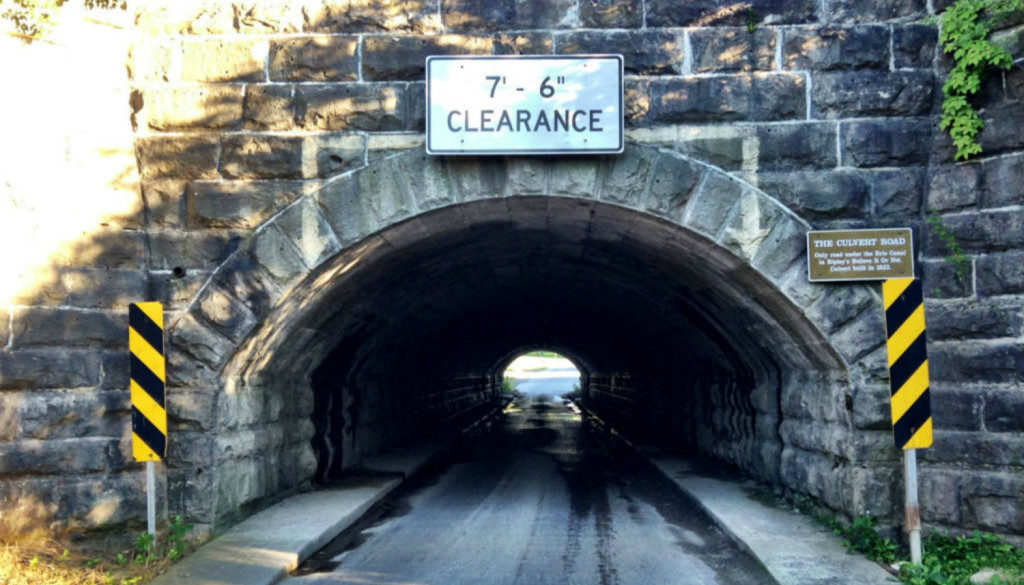
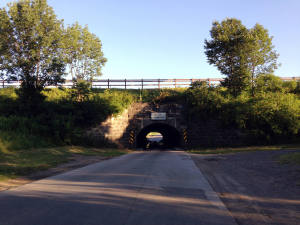
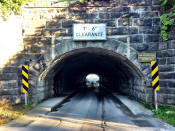

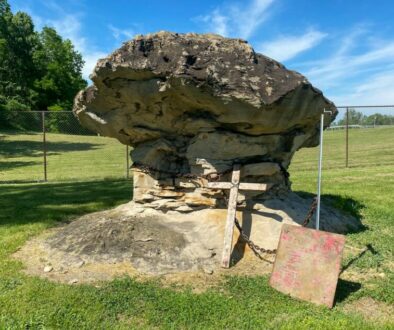
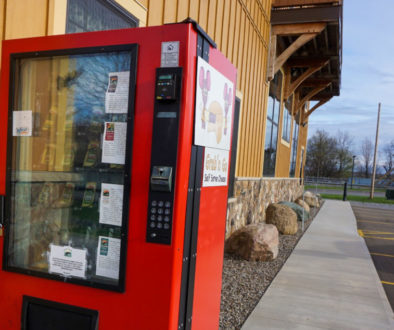

October 4, 2016 @ 6:27 pm
We also have the only Church built in the middle of the road, in Medina, NY. St. John`s Episcopal Church. On Church St.
December 30, 2018 @ 11:35 pm
Thank you so much for this very interesting and detailed story about the Medina Culvert. Your accompanying photos, from every angle really help me understand the area’s layout and see the architecture of the underpass. I will now include the Medina Culvert in a day trip from our home in Rochester, NY.
December 31, 2018 @ 9:13 am
Thanks, Kris! It’s an easy trip to the culvert from Rochester–I think you’ll dig visiting!
A Route 31 Ramble: Rochester to Lewiston |
January 5, 2019 @ 8:16 am
[…] Read more about Medina’s Culvert Road […]
Rochester's Fun Facts: Oldest, Original, Only, and More! | Day Trips Around Rochester
April 21, 2019 @ 1:31 pm
[…] Culvert Road in Medina is the only place you can drive under the Erie Canal. […]
June 29, 2020 @ 10:36 am
Very interesting, would make a great road trip.
August 19, 2020 @ 7:16 pm
Took a friend to see it today and really enjoyed it. Can’t find anything telling me how deep the water is in the canal there.
December 11, 2021 @ 1:15 pm
Have you ever thought of exploring Lewis County, NY. Constable Hall, the Tug Hill Plateau, the many waterfalls, the Indian Legend of the lover’s suicide (a Romeo & Juliette like story) by jumping into the Black River from a big rock on the Louis Mihalyi property (between Greig and Glenfield). They were from opposing warring tribes. Louis Mihalyi is now deceased, and I don’t know if anyone in his family still owns the property. Moreover, the Black River does not flow next to that rock although it may have at some point in the distant (prehistorical) past. The rock itself is huge, easily observable from NY Route 12, some 3 miles away. In addition, Lewis County played a prominent role in the “Underground Railroad,” sheltering fugitive slaves making their way to Canada. For more information, consult the Lewis County Historical Society in Lowville, the County Seat).